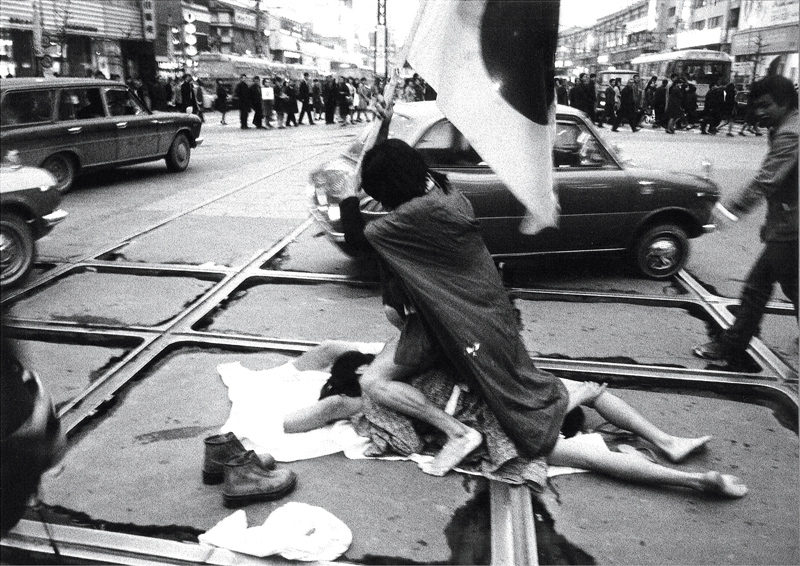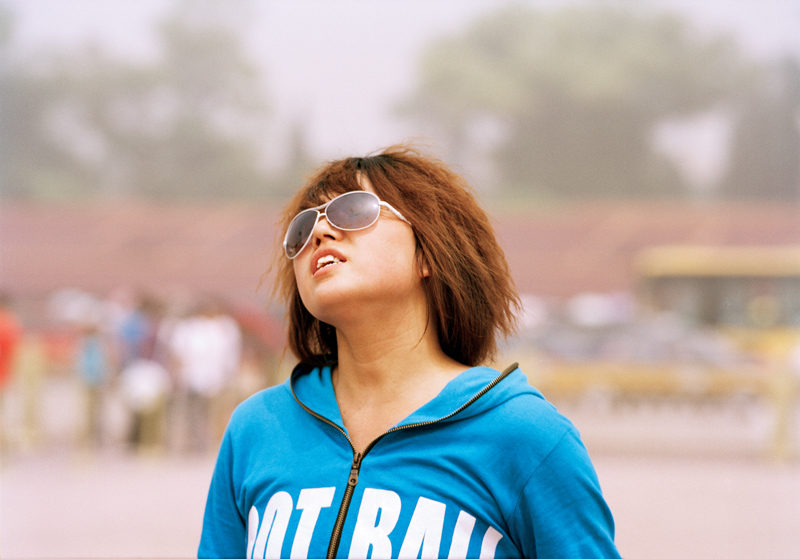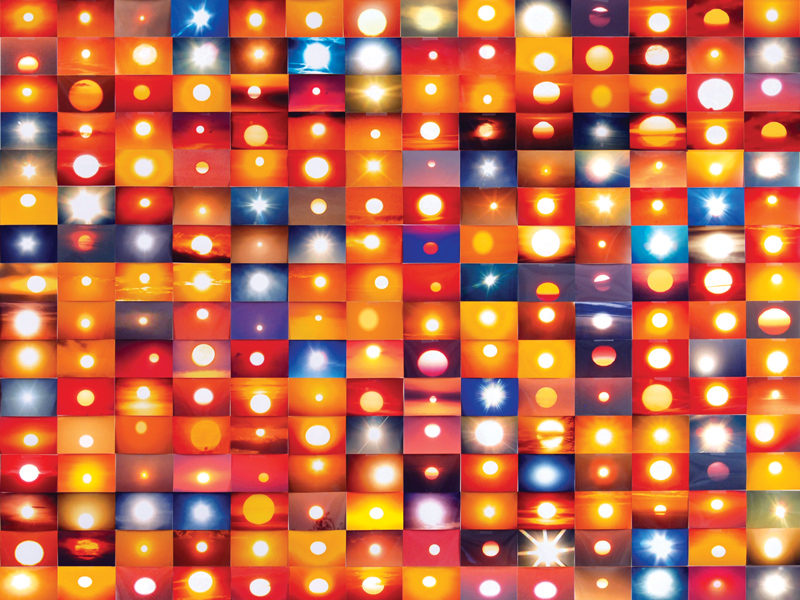[Winter 2012]
Les Rencontres d’Arles
4 July to 18 September 2011
This edition of Les Rencontres d’Arles, the forty-second, adopted the challenge of exploring the image economy, as well as photography’s relationship with the World Wide Web and with social networks, within the ambit of forty-seven diverse exhibitions. “From Here On,” the centrepiece exhibition at the Rencontres this year, presents photography in the context of the Web, the “digital revolution,” and how they circulate images. Presenting one view of the Web’s impact on the modernist project of democracy, “From Here On” invites us to consider the ambiguities of this impact on photography as an art form. That is, we are invited to explore the potential of the Web as a site of democratized communication, especially with respect to the photographic image. In techno-culture, information and knowledge are manifested not by way of text but as image, and this is where the Web may bring an inclusionary dynamic to the circulation of images. The value of images in or as communication across diverse communities of viewing is posed against their autonomous value as objects of aesthetic contemplation. Certainly, this form of circulation has handed the means of documentation and dissemination to gadget users everywhere, as the world is seeing with the Arab Spring.
However, the Web’s impact on photog-raphy as an artistic medium and discipline is something equally profound. It levels the aesthetic hierarchy as far as the appreciation of photographic images is concerned, so that now, one photograph will be as good as any other. This constitutes a critical disturbance of the Beaux Arts or museum model of art viewing, the world now having become simultaneously a studio and a museum. The devaluing of individual images as such shatters a historical model of photographic truth – yet another interesting example of democratization colliding with nihilism. If the Web is a true medium, as techno-culture proposes, then it represents an overcoming of information and knowledge as property, with a corresponding expansion of public space occupied as a space of contestation. On the darker side, is the new “disposability” of photographs anything other than a transfer of authority of production from the human hand to software? As Habermas would argue, perhaps the Internet is an ideology of publicity in the service of communicative capitalism. Even if “From Here On” has not exactly provided us with answers to these sorts of questions, it does invoke a field that we might consider “public,” a space of debate, a vital debate over space itself.
Les Rencontres d’Arles, as a whole, has framed a challenge by bringing its focus onto this relationship between photography, a medium founded on technical reproducibility, and the electronic media with their “social networks.” What is presented at the Rencontres this year is certainly photography – a term that describes a field occupied by diverse tendencies, ranging from work shown in modernist art museums to mainstream photojournalism and commercial portraiture. It is the tension created among these tendencies that defined this year’s Rencontres – a tension that includes a striving both for and against “art status” for photography. This division into two perspectives revolves around a different relationship with photography’s founding realism: both perspectives rely on it, but the museum-oriented works claim a reflective emphasis on analysis and self-criticism, whereas from the documentary position museum-based art practice is elitist and lacks the urgency appropriate to actual life-world situations. However, it is important to note the degree to which, with the use of the Web as medium, the ontology of the photographic image has been returned to realism as argued for by André Bazin. Amateur photojournalism arrives with a new stature. This year’s Les Rencontres d’Arles demonstrated both the difficulties and the successes posed within the realm of these issues. Occasionally, works that might have been photojournalistic instead became “high design” – for example, Raphael Dellaporta’s aerial views of Afghan ruins shaped into irregular geometric “ruins,” and Sebastiao Salgado’s refined views of capitalism as environmental and social disaster. On the other hand, the truly successful works in the exhibition were those that integrate and clarify the pressures between “art status” and “fact status” for photographs. For example, the fixity that is one of the defining characteristics of photography is dramatically presented in the enigmatic works of Montreal artist Lynne Cohen, one of the nominees for the Rencontres Discovery Award this year. In fact, this section of the entire event presented the most accomplished and pertinent works, including New York artist Penelope Umbrico’s recontextualized Internet derivations, London-based Rut Blees Luxemburg’s sensuous renderings of the urban artifice, London-based Indre Serpytyte’s photographs in which she documents hand made sculptural reconstructions of notorious sites, somewhat in the manner of Thomas Demand but with a different specificity, and the poetic documentary work of Tokyo artist Minoru Hirata, who sensitively documented Okinawa under American occupation and who has been a collaborator of High Red Centre, Yoko Ono, and the Zero Group. These photographers have in common a preference for practices of resistance based in photography’s ambiguous realism, a resistance that frees them from the gimmickry seen in some segments of the Rencontres. An event founded on the theme of photography is bound to pose the question of visual culture in a context alternative to that of the art institution. Photography as visual culture is composed of diverse activities, from consumer design and entertainment to war journalism and pornography. We could say that it both gains and loses by its substitution of consumer publicity for modernist criticality. What it gains is at least the promise of access to communication, but then, what does it lose as it falls into the bottomless pit of superfluity that is the contemporary world of “visual culture”? This poses the problem of a field with no outside, but photography, as a practice resting on “framing,” offers the potential for reflective seeing. Photography is framing and framing is analysis – that is, constructing clarity through penetration, fragmentation, selection, comparison, sequencing, and evaluation. The École Nationale Supérieure de la photographie at Arles made a selection from works by the class of 2011, presenting the very modernist and subtle formal work of Oscar Dumas, Julie Fisher, and Pierre Toussaint. These works were, with their modest adherence to modernist principles, refreshingly free from pretensions and gimmickry.
The strengths of photography as critical museum art were well presented by photographer-artists such as Trisha Donnelly, Willie Doherty, and Sophie Ristelhueber,as well as those mentioned above from the section of Discovery Award nominees. The ambition of photography to perceptively and factually document the world as event, from the intimate to the grand, were well represented by photographers such as Minoru Hirata and the works from The Mexican Suitcase (Robert Capa, Chim, and Gerda Taro). Photography is fundamental to the contemporary set of image systems that take the place of a world. The 2011 Les Rencontres d’Arles makes a relevant intervention into a field characterized by ambivalence. If photography is now embedded in a system of industrial production that is more and more a unified system of surveillance, is there a viable path of resistance? For photography, deeply embedded as it is in the social world, self-referentiality, “medium specificity,” and “ambiguity” may yet offer a renewed opportunity.
Stephen Horne lives in Montreal and France and was a professor in media arts at nscad University in Halifax from 1979 to 2005. His reviews and essays are published in journals, anthologies, and exhibition catalogues in Canada, Europe, and Asia. For 2011–12, Horne is a Visiting Scholar in the Gail and Stephen Jarislowsky Institute at Montreal’s Concordia University.



